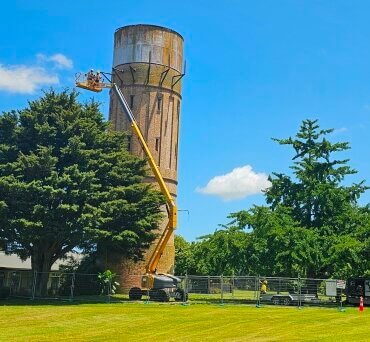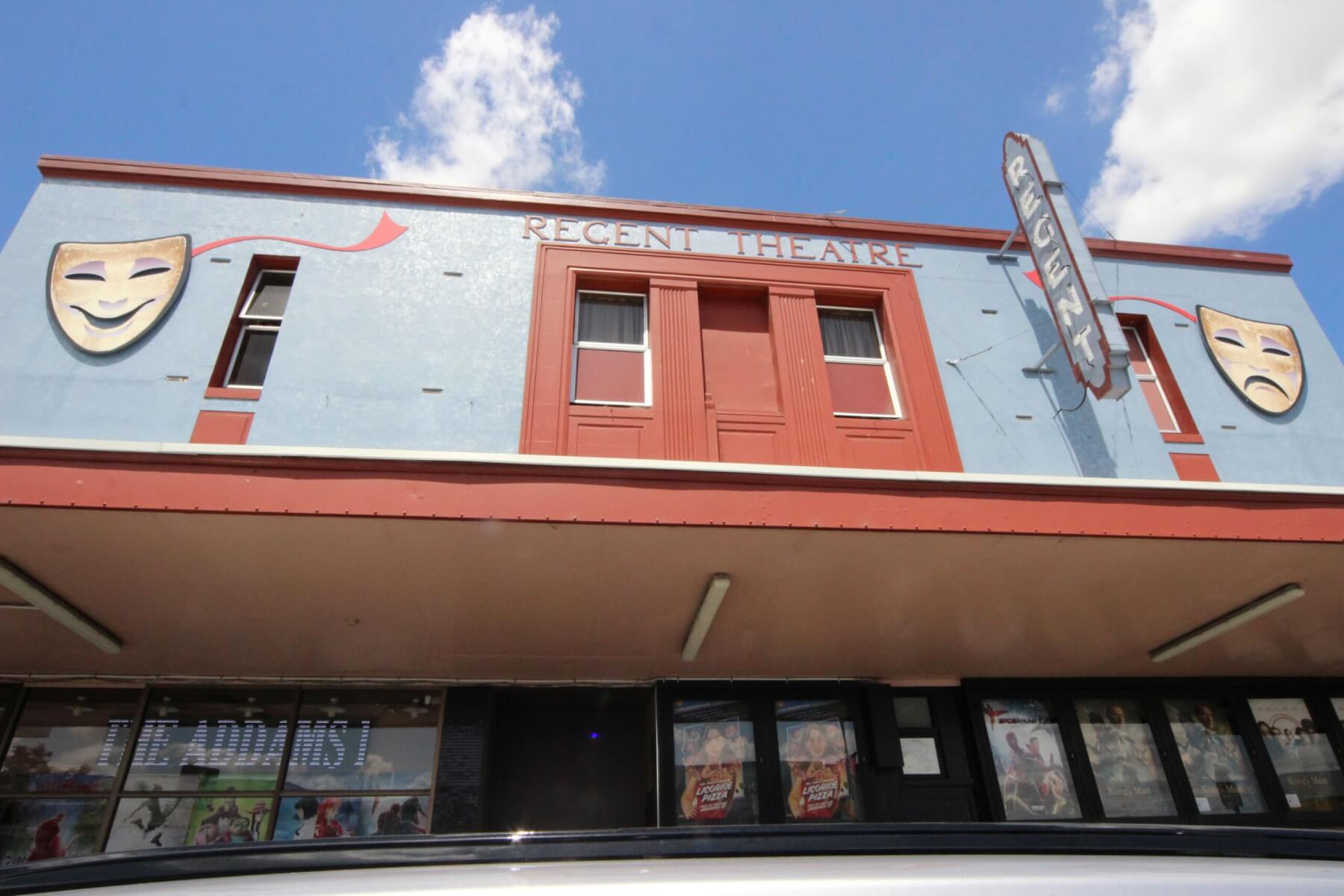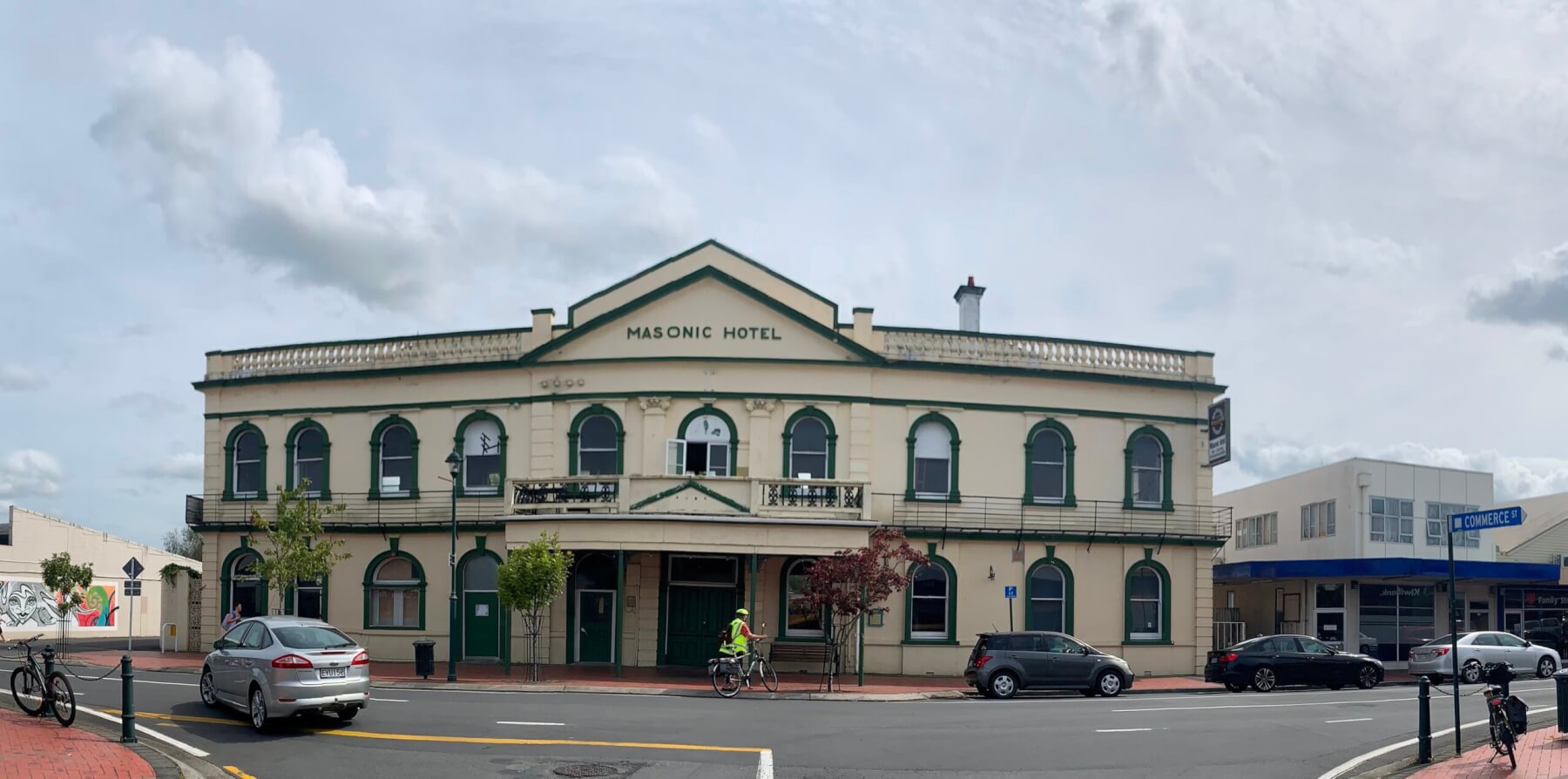
Water Tower surrounds taken down.
Mayors have greeted changes to how earthquake prone buildings are regulated – a move which will breathe new life into dozens of buildings in Waipā and King Country.
Across the country more than half of the quake-prone buildings will be removed from the Earthquake Prone Buildings register – about 2900 buildings. Around 1440 will face “more cost-effective remediation requirements” and 840 will require no remedial work
Auckland, Northland and the Chatham Islands will be removed from the regime entirely “to reflect the low seismic risk in those areas”.
See: Cambridge earthquake risk register
See: Ohaupo earthquake risk register
See: Te Awamutu earthquake risk register
See: Te Kuiti earthquake risk register
See: Piopio earthquake risk register
In Waipā mayor Susan O’Regan said a risk-based system made sense.

Susan O’Regan
“It means we can focus attention and investment on buildings that genuinely put people at risk, rather than applying a blunt, one-size-fits-all rule,” she said.
Ōtorohanga mayor Max Baxter called it great news for all of New Zealand “especially for our small rural communities”. Waitomo mayor John Robertson told The News “at last some common sense has been applied”.
In 2022 The News reported the Earthquake Prone Buildings Register, held by the Ministry of Business, Innovation and Employment, listed 42 buildings in Cambridge, 19 in Te Awamutu, three in Ōhaupō and one in Kihikihi.
Six of the most iconic were the Masonic Hotel, Museum and Water Tower in Cambridge, the Regent Theatre and Spindleys Building in Te Awamutu and the Clock Shop in Ōhaupō.

Regent Theatre

Masonic Hotel front three years ago.
For Waipā, which sits in a medium seismic risk area, it could mean some older buildings – particularly in Cambridge and Te Awamutu town centres – may no longer be classed as earthquake-prone once the Ministry for Business, Innovation and Employment updates the assessment criteria, O’Regan said.
“That could ease a real burden for private owners, many of whom have faced uncertainty and potentially crippling costs under the old system.
“As a Council, we’ve already completed seismic assessments on a small number of our own buildings, like the Cambridge Museum, Ōhaupō Memorial Hall and the Roche Street office and Museum building.
“These reforms won’t change our duty and responsibility to address genuine risks, but they should allow for more proportionate, staged solutions that keep people safe without undue compliance costs.”
She said the priority must remain public safety, but the changes strike a better balance between cost and risk.
“It’s encouraging to see Government listening to Councils and communities and delivering a more balanced approach.
“What we need now is clear, practical guidance from MBIE so building owners – public and private – can make informed decisions with confidence. This is about protecting both people and the places that give Waipā its character.”
In making the announcement Building and Construction Chris Penk said cities and regions were losing the businesses, churches, town halls and classrooms that were central to their local economies and community spirit.
“For many buildings, the price of strengthening runs from hundreds of thousands to several million dollars. As a result, these buildings are often left empty and become derelict, making them even more dangerous to bystanders in an earthquake.”








